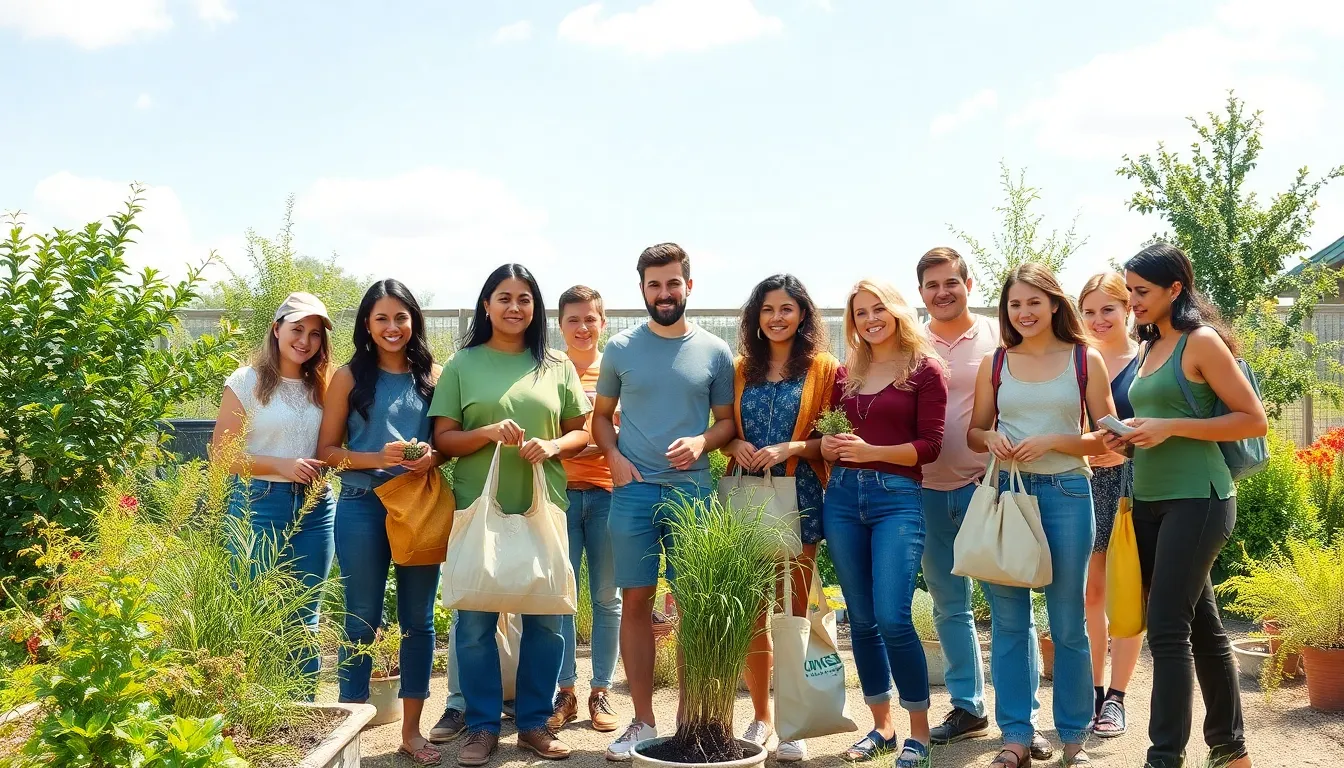Table of Contents
ToggleIn a world where plastic seems to grow on trees and carbon footprints are the new fashion statement, sustainable living might just be the superhero we didn’t know we needed. Imagine a lifestyle where eco-friendly choices not only save the planet but also make you feel like the environmental champion you were born to be. Spoiler alert: it’s easier than you think!
This blog dives into the delightful chaos of sustainable living, proving that going green doesn’t mean giving up your morning coffee or your beloved avocado toast. From quirky tips to practical advice, it’s all about making small changes that pack a punch. So get ready to embrace a lifestyle that’s as good for the Earth as it is for your conscience—and maybe even your wallet. Who knew saving the planet could be this much fun?
Understanding Sustainable Living
Sustainable living integrates eco-friendly practices into daily life. It emphasizes reducing waste, conserving resources, and making choices that support the environment.
Definition of Sustainable Living
Sustainable living refers to a lifestyle that aims to minimize environmental impact. It includes practices such as reducing consumption, reusing materials, and recycling waste. Individuals can make conscious decisions regarding food, energy, transportation, and housing that prioritize environmental health. This lifestyle fosters harmony between human needs and the planet’s capabilities, ensuring that future generations can thrive without depleting natural resources.
Importance of Sustainable Practices
Sustainable practices play a crucial role in addressing environmental challenges. They reduce pollution, lower carbon footprints, and conserve biodiversity. Implementing these practices helps mitigate climate change and promotes healthier ecosystems. Individuals adopting sustainable habits contribute to community resilience, encouraging shared responsibility for environmental stewardship. Financial savings from reduced energy consumption and waste can also motivate sustainable choices, demonstrating that eco-friendly living aligns with personal and collective well-being.
Starting Your Sustainable Living Journey



Starting a sustainable living journey requires mindful evaluation and goal setting. Individuals can embrace eco-friendly practices by first understanding their current lifestyle and making targeted improvements.
Assessing Your Current Lifestyle
Assessing one’s lifestyle involves a thorough examination of daily habits. Identify areas that contribute to waste, like single-use plastics or excessive energy consumption. Track purchases and waste generation for a week to gain insights into patterns. Evaluate transportation methods and food consumption, focusing on local and organic options. Recognizing these habits allows individuals to pinpoint opportunities for meaningful change. This self-assessment sets a strong foundation for transitioning to more sustainable practices.
Setting Sustainable Goals
Setting sustainable goals fosters focused and actionable change. Utilize the SMART criteria—Specific, Measurable, Achievable, Relevant, Time-bound—to define objectives clearly. For instance, commit to reducing plastic use by 50% within six months. Choose one sustainable practice to incorporate each month, such as composting or adopting a plant-based diet. Establishing these specific targets promotes accountability and progress. Regularly reviewing and adjusting goals further enhances commitment to a sustainable lifestyle, ensuring lasting positive impact on both personal habits and the environment.
Essential Topics for a Sustainable Living Blog
Sustainable living blogs benefit from covering diverse topics that engage readers while providing practical solutions. The following areas are essential for encouraging eco-friendly lifestyles.
Eco-Friendly Products and Reviews
Eco-friendly products simplify sustainable living. Highlighting biodegradable cleaning supplies, reusable kitchen items, and natural cosmetics helps readers make informed purchases. Detailed reviews should assess product effectiveness, environmental impact, and ethical sourcing. Recommendations for brands with transparency in their manufacturing processes enhance credibility. Readers appreciate clear comparisons that showcase value and sustainability, enabling them to choose options that align with their eco-conscious values.
Sustainable Recipes and Cooking Tips
Sustainable recipes focus on seasonal, local ingredients that minimize carbon footprints. Featuring plant-based dishes promotes health and environmental benefits. Tips for reducing food waste, such as using leftovers creatively, resonate with readers wishing to adopt sustainable cooking practices. Suggestions for meal prep and bulk buying encourage smarter shopping, ultimately saving money and reducing packaging waste. Clear instructions and easy substitutions make recipes accessible while embodying the principles of sustainable living.
Green Home Improvements
Green home improvements enhance energy efficiency and reduce environmental impact. Topics should include insulation upgrades, solar panel installations, and water-saving fixtures. Practical steps for creating a sustainable home environment, such as using eco-friendly paints and sustainable materials, promote reader engagement and inspire actionable change. Cost breakdowns and long-term savings potential motivate homeowners to invest in green renovations. Providing resources like DIY guides and professional recommendations ensures readers can achieve their sustainable home goals effectively.
Engaging with the Community
Community engagement enhances the sustainable living journey, fostering connections and amplifying impact. Individuals can find support, share experiences, and collaborate on solutions that promote eco-friendly practices.
Building a Network of Like-Minded Individuals
Creating a network of like-minded individuals strengthens commitment to sustainable living. Joining local sustainability groups or online forums provides opportunities to exchange ideas, resources, and support. Participating in social media platforms focused on sustainability allows connections with others who share similar values and goals, leading to collaborative projects like community gardens or upcycling workshops. Social gatherings, such as eco-conscious meetups or volunteer events, foster friendships and deepen engagement in the movement. Embracing these connections boosts motivation and facilitates learning from peers.
Participating in Local Sustainability Initiatives
Participating in local sustainability initiatives offers hands-on experience and a sense of community. Individuals can engage with local environmental organizations, attend workshops, or volunteer for clean-up events. Initiatives like tree planting, recycling drives, and farmers’ markets promote sustainable practices while building community ties. Local sustainability fairs often showcase eco-friendly businesses and initiatives, providing opportunities to learn, connect, and encourage others. By contributing time and effort to these initiatives, individuals not only create a positive environmental impact but also inspire others to join the movement.






